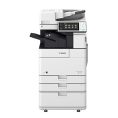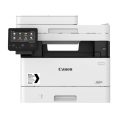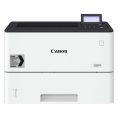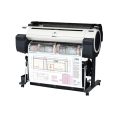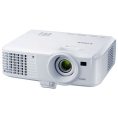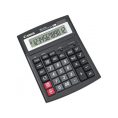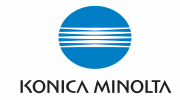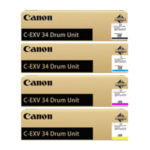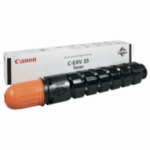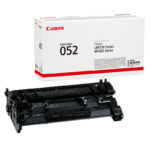
Chartered accountant Michael Brown is the founder and CEO of Double Entry Bookkeeping. He has worked as an accountant and consultant for more than 25 years and has built financial models for all types of industries. He has been the CFO or controller of both small and medium sized companies and has run small businesses of his own. He has been a manager and an auditor with Deloitte, a big 4 accountancy firm, and holds a degree from Loughborough University. Volume variance is further sub-divided into efficiency variance and capacity variance. If the balances are insignificant in relation to the size of the business, then we can simply transfer them the cost of goods sold account.
8 Overhead Variances
The standard overhead cost is usually expressed as the sum of its component parts, fixed and variable costs per unit. Note that at different levels of production, total fixed costs are the same, so the standard fixed cost per unit will change for each production level. However, the variable standard cost per unit is the same per unit for each level of production, but the total variable costs will change. To determine the overhead standard cost, companies prepare a flexible budget that gives estimated revenues and costs at varying levels of production. Boulevard Blanks has decided to allocate overhead based on direct labor hours (DLH).
Would you prefer to work with a financial professional remotely or in-person?
A favorable variance may occur due to economies of scale, bulk discounts for materials, cheaper supplies, efficient cost controls, or errors in budgetary planning. This is a portion of volume variance that arises due to high or low working capacity. It is influenced by idle time, machine breakdown, power failure, strikes or lockouts, or shortages of materials and labor. This variance arises due to the difference in the number of working days when the actual number of working days is greater than standard working days.
How confident are you in your long term financial plan?
Also, in case where variable overhead rate is based on labor hours, the variable overhead efficiency variance does not offer any additional information than provided by the labor efficiency variance. Usually, the level of activity is either direct labor hours or direct labor cost, but it could be machine hours or units of production. This journal decreases both the inventory and COGS accounts by the appropriate amount and clears the variance account balances. The fixed factory overhead variance represents the difference between the actual fixed overhead and the applied fixed overhead.
What are the formulas to calculate the overhead variances?
Finance Strategists has an advertising relationship with some of the companies included on this website. We may earn a commission when you click on a link or make a purchase through the links on our site.
Why You Can Trust Finance Strategists
- Budget or spending variance is the difference between the budget and the actual cost for the actual hours of operation.
- By showing the total variable overhead cost variance as the sum of the two components, management can better analyze the two variances and enhance decision-making.
- Note that there is no alternative calculation for thevariable overhead spending variance because variable overhead costsare not purchased per direct labor hour.
- The variable overhead variance is a measure of the difference between the standard variable overhead costs and the actual variable overhead costs incurred for a given period.
- By contrast, efficiency variance measures efficiency in the use of the factory (e.g., machine hours employed in costing overheads to the products).
- This could be for many reasons, and the production supervisor would need to determine where the variable cost difference is occurring to better understand the variable overhead efficiency reduction.
Before we go on to explore the variances related to fixed indirect costs (fixed manufacturing overhead), check your understanding of the variable overhead efficiency variance. Therefore, these variances reflect the difference between the Standard Cost of overheads allowed for the actual output achieved and the actual overhead cost incurred. This is a cost that is not directly related to output; it is a general time-related cost.
Variable overhead spending variance is the difference between actual variable overhead cost, which is based on the costs of indirect materials involved in manufacturing, and the budgeted costs called the standard variable overhead costs. As with direct materials and direct labor variances, allpositive variances are unfavorable, and all negative variances arefavorable. Note that there is no alternative calculation for thevariable overhead spending variance because variable overhead costsare not purchased per direct labor hour. For example, the number of labor hours taken to manufacture a certain amount of product may differ significantly from the standard or budgeted number of hours. Variable overhead efficiency variance is one of the two components of total variable overhead variance, the other being variable overhead spending variance. Interpretation of the variable overhead rate variance is often difficult because the cost of one overhead item, such as indirect labor, could go up, but another overhead cost, such as indirect materials, could go down.

In this example, the variable overhead rate variance is positive (50 favorable), and the variable overhead efficiency variance is also positive (100 favorable), resulting in an overall positive variable overhead variance (150 favorable). It is entirely possible that an improperly-set standard number of labor hours can result in a variance that does not represent the actual performance of an entity. Consequently, investigation of the variable overhead united kingdom corporation tax efficiency variance should encompass a review of the validity of the underlying standard. Specifically, fixed overhead variance is defined as the difference between standard cost and fixed overhead allowed for the actual output achieved and the actual fixed overhead cost incurred. The standard direct labor hours allowed (SH) in the above formula is calculated by multiplying standard direct labor hours per unit and actual units produced.
Controlling overhead costs is more difficult and complex than controlling direct materials and direct labor costs. Looking at Connie’s Candies, the following table shows the variable overhead rate at each of the production capacity levels. Variable production overheads include costs that cannot be directly attributed to a specific unit of output. Costs such as direct material and direct labor, on the other hand, vary directly with each unit of output.

